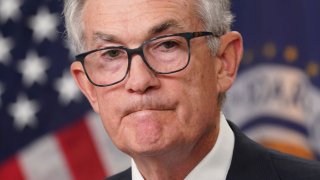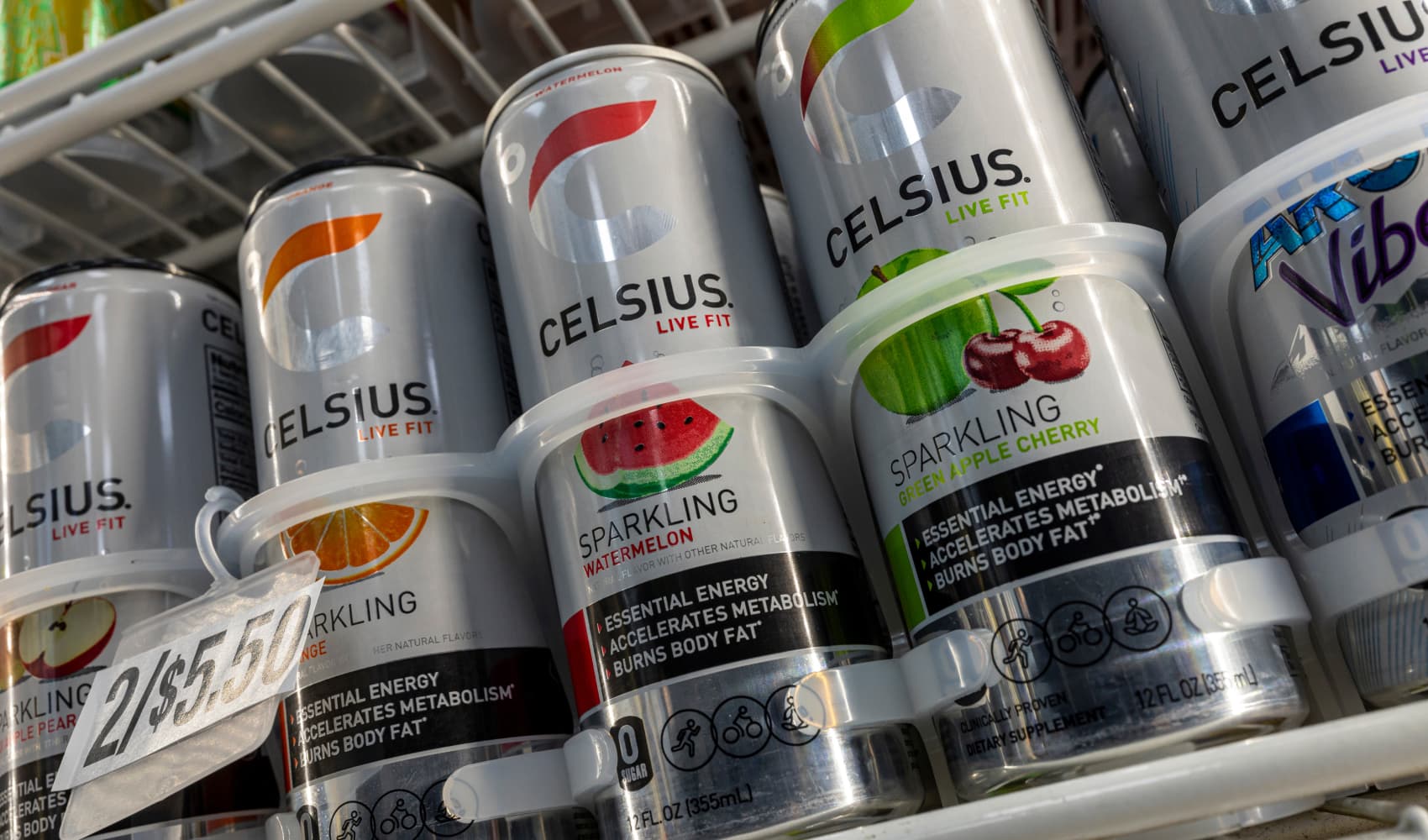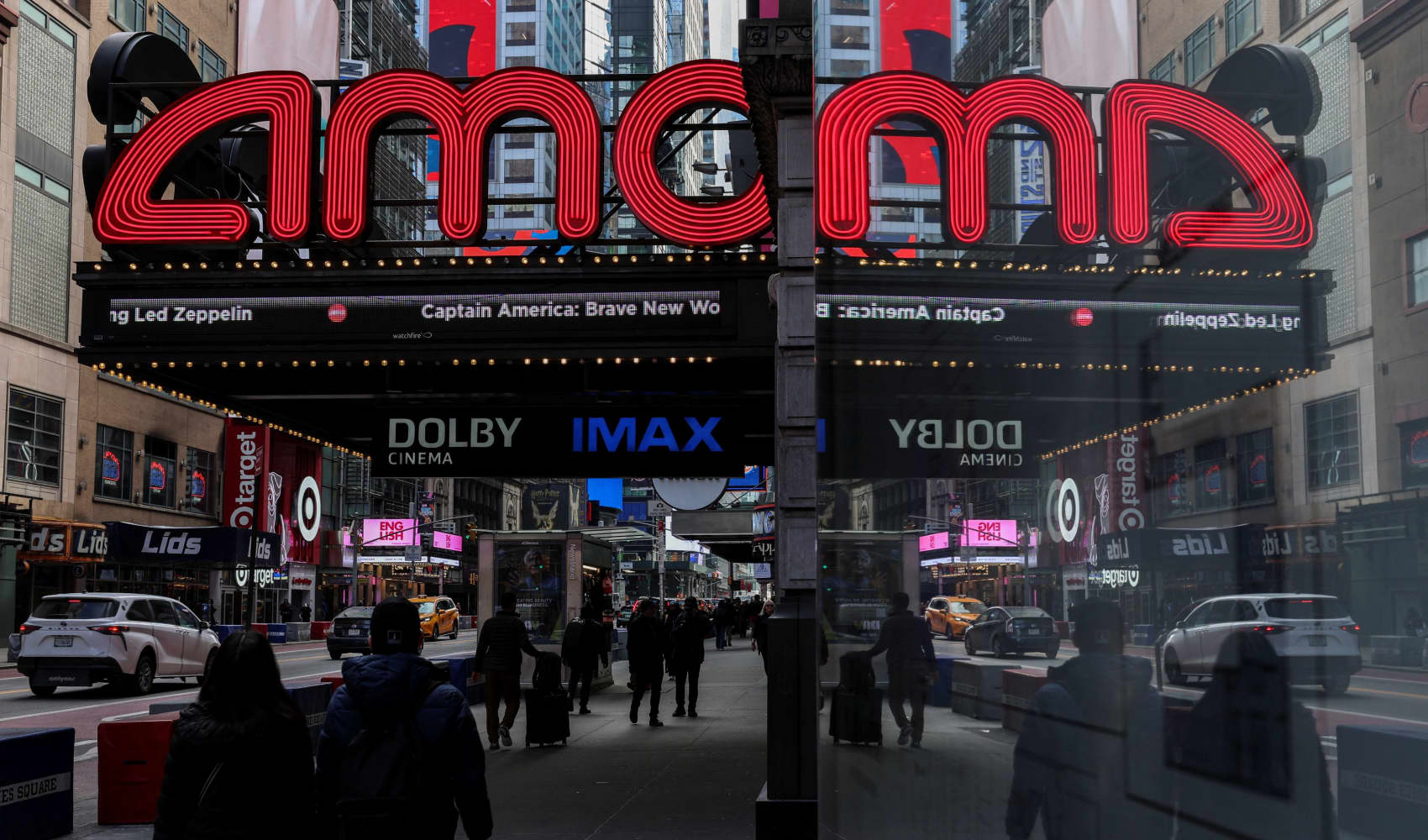
U.S. Federal Reserve Board Chairman Jerome Powell pauses during a news conference after Federal Reserve raised its target interest rate by three-quarters of a percentage point in Washington, September 21, 2022.
The Federal Reserve on Wednesday announced it would raise benchmark interest rates by three-quarters of a percentage point and indicated more hikes would be coming.
The uptick is the third consecutive 0.75 percentage point move and the fifth increase in the last six months — all part of an effort by the central bank to cool runaway inflation. All told, the series of hikes has brought the federal funds rate to a range of 3% to 3.25%, the highest it's been since 2008, and up from a rate of near zero to start the year.
You'd have to go back to 1981 to find a six-month period when interest rates rose more. The numbers back then were a little more extreme: From the end of July 1980 through January 1981, the federal funds rate bounced from 9% up to an eye-watering 19%, according to the Federal Reserve Bank of St. Louis.
With more interest rate hikes on the rise, it's worth reviewing how they affect your finances and how financial experts say you can best adjust your saving, spending and investing strategies.
Get top local stories in Philly delivered to you every morning. Sign up for NBC Philadelphia's News Headlines newsletter.
Prioritize paying off debt
The Fed's moves make it costlier to borrow, as rates on several forms of consumer borrowing are pegged to the federal funds rate.
"You are peddling into a progressively stiffer headwind as interest rates rise," Greg McBride, chief financial analyst at Bankrate, told CNBC. "Credit card rates are the highest since 1996, mortgage rates are the highest since 2008 and auto loans are the highest since 2012."
Money Report
Further hikes to interest rates won't affect a fixed-rate car loan you may have, and the same goes for fixed rate mortgages. If you carry a balance on a credit card, however, the rate you owe on that money will continue to rise alongside short-term rates set by the Fed.
With the average card charging currently an interest rate of 18.16%, according to Bankrate, it's essential to take action ASAP.
"The interest you save by paying down debt is the same thing as making an investment with the same rate of return on an after-tax basis with no risk," says Lisa Featherngill, national director of wealth planning at Comerica. "If your card has a 22% interest rate, it's the same as earning 22% on your investment after tax."
If you're unable to pay down your debt quickly, moving your debt over to a balance transfer credit card can ensure that you'll owe no interest on your outstanding balance for 6 to 21 months.
Other options for easing your high-interest-rate debt burden include consolidating your debt under a low-rate personal loan or signing up with a credit counseling service.
"If you have more than $5,000 in debt, these can be really beneficial," Ted Rossman, senior industry analyst at Bankrate, told CNBC Make It.
Up the interest rate you're getting on cash in the bank
One silver lining of a rising rate environment is that it becomes more lucrative to save. Well, depending where you're doing the saving.
Although interest rates on deposits tend to be correlated with rises in the fed funds rate, you're still likely to earn next to nothing on your savings. Bank of America, Chase, U.S. Bank and Wells Fargo each offer an annual rate of 0.01%, according to Bankrate. Altogether the national average rate on savings accounts is just 0.13%.
There are deals to be had at online banks, however, with several offering interest rates north of 2%, and even 2.5% on savings accounts.
That may seem like cold comfort for savers who are enduring inflation north of 8%, points out Kelly Lavigne, vice president of consumer insights at Allianz Life. "In this environment, you're going to lose money if you have cash sitting on the sidelines," he says.
Nevertheless, financial pros recommend keeping enough cash to cover at least three to six months' worth of living expenses in an emergency fund: "That way, if the worst happens, you've got enough to cover your bills," he says. And even if current rates on your cash reserves won't keep up with inflation, earning something on your money beats earning next to nothing.
Choose investments wisely, think long-term, and 'make sure you're not panicking'
If you've taken a look at your portfolio amid the recent rate-hiking regime, you've likely noticed that your stocks and bonds don't seem to be big fans of higher rates. The S&P 500 has shed about 20% so far this year as fears have mounted among investors that the Fed's efforts to slow inflation could tip the economy into recession.
Bonds, traditionally viewed as a less-volatile ballast to counterbalance stock portfolios, haven't been much better. Because bond prices and interest rates move in opposite directions, bonds indexes have been walloped in 2022, with the Bloomberg Barclays U.S. Aggregate Bond index surrendering more than 13% on the year.
If you're a long-term stock investor, "you want to make sure you're not panicking," says Lavigne. "It can be a difficult thing to buy when the market is going down. You're better off continuing to make periodic investments and not trying to time the market."
Bond investors, meanwhile, would be wise to check their portfolio's average duration, a measure of interest rate sensitivity. Generally, longer-maturity bonds come with a longer duration, meaning that they'll decline more in value in response to hikes in interest rates. Shorter-term bonds will tend to hold up better during rising rate regimes.
One investment everyone would be wise to consider, at least according to Suze Orman: series I bonds. These bonds, issued by the Treasury and known simply as "I bonds," pay a fixed interest rate throughout the life of the bond plus a rate pegged to changes in inflation. If you buy before the end of October, you'll get an interest rate of 9.62%.
There are a few catches. Among them: They can't be redeemed within 12 months of your purchase date, and you'll face a penalty equal to three months' worth of interest if you cash out any time over the first five years of owning the bond. The bonds must be purchased directly from the Treasury's website, and you can invest no more than $10,000 per person per calendar year.
Because there are complicated investments, you'd be smart to consult a financial planner before buying, says LaVigne. "No one should go all in on any one kind of investment without talking with a financial professional first."
Sign up now: Get smarter about your money and career with our weekly newsletter
Don't miss: The Fed just made a ‘jumbo’ interest rate hike of 0.75%—here are 4 things that will be more expensive






